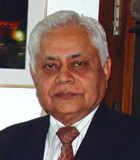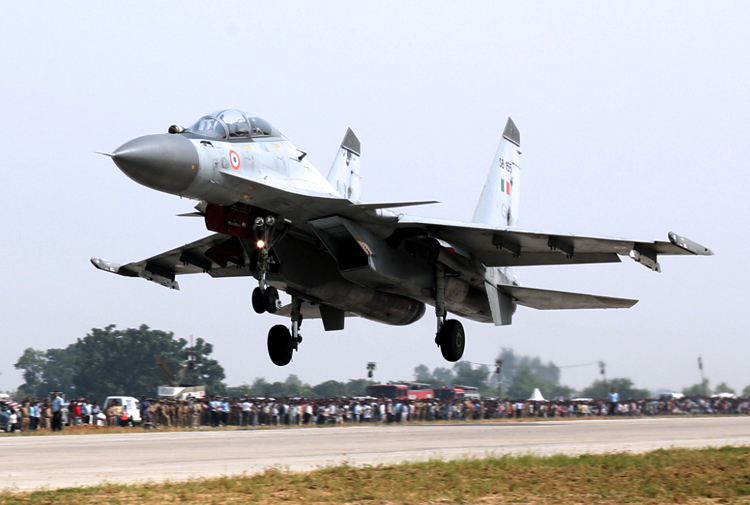INDIAN ARMED FORCES CHIEFS ON OUR RELENTLESS AND FOCUSED PUBLISHING EFFORTS

The insightful articles, inspiring narrations and analytical perspectives presented by the Editorial Team, establish an alluring connect with the reader. My compliments and best wishes to SP Guide Publications.

"Over the past 60 years, the growth of SP Guide Publications has mirrored the rising stature of Indian Navy. Its well-researched and informative magazines on Defence and Aerospace sector have served to shape an educated opinion of our military personnel, policy makers and the public alike. I wish SP's Publication team continued success, fair winds and following seas in all future endeavour!"

Since, its inception in 1964, SP Guide Publications has consistently demonstrated commitment to high-quality journalism in the aerospace and defence sectors, earning a well-deserved reputation as Asia's largest media house in this domain. I wish SP Guide Publications continued success in its pursuit of excellence.
Expressway Landings
An important operational achievement, the exercise of activating portions of highways for landing and takeoff by military aircraft will become a regular feature in the peacetime training programme of the IAF.
 | By Air Marshal B.K. Pandey (Retd) Former Air Officer Commanding-in-Chief of Training Command, IAF |
October 24, 2017 was indeed a red letter day for the Indian Air Force (IAF) when 16 of its fighter jets carried out an air exercise to land on a portion of the Agra-Lucknow expressway near Unnao, approximately 60 km from Lucknow. Roughly 3,500 metres stretch of the highway was earmarked for the purpose and was closed to vehicular traffic. The participating aircraft included a mix of the Sepecat Jaguars from Gorakhpur and the Mirage 2000 from Gwalior that have been in service with the IAF since the mid eighties as also the Su-30MKI from Bareilly that has been inducted recently and today, is the mainstay of the combat fleet of the IAF.
The air exercise began with a C-130J Super Hercules based at Air Force Station Hindon landing on the highway with the Garud commandos of the IAF who disembarked along with their vehicles and simulated a scenario of quickly securing the whole area before the fighter jets arrived. Having offloaded the Garud commandos, the C-130 took off and returned to its base. The fighter jets then arrived in formation from different fighter bases, touched down singly in sequence and got airborne again to return to their respective parent base. The air exercise ended with the C-130 returning to pick up the Garud commandos and their vehicles. For the thousands of rural folk who gathered to have a close look at combat aircraft, an opportunity seldom available, the exercise turned out to be an exhilarating air show.
The air exercise was conducted in a flawless manner and was aptly commended by Air Marshal S.B. Deo, Vice Chief of the Air Staff, who described it as an “important operational achievement”.
Using a highway for landing of military aircraft when the runway at a fighter base is bombed by the enemy aircraft and put out of action, was a concept developed in Germany during the World War II when aircraft of the Luftwaffe were often recovered on the highways called autobahns. This practice did not remain confined to Germany, but spread across Europe into Sweden, Finland and Switzerland. On the other side of the Iron Curtain, this practice was adopted by Russia, Czechoslovakia and Poland. Other countries where parts of highways are used by military aircraft during an emergency are Israel, North Korea, South Korea, Taiwan, Singapore and Australia. Even Pakistan adopted this practice 17 years ago when Pakistan Air Force carried out training exercises involving landing on the designated strips on the highways by the F-7P and Mirage III fighter aircraft, C-130 Hercules tactical transport aircraft and Super Mushak trainer aircraft. Currently, there are two highways or Motorways as these are referred to there, namely M-1 connecting Peshawar to Islamabad and M-2 between Islamabad and Lahore, that have two 9,000 feet long stretch on each of the highways designated for recovery of military aircraft during war.
The IAF carried out the first such exercise on May 21, 2015 with the Mirage 2000 aircraft operating from Gwalior landing on the Yamuna expressway connecting Greater Noida with Agra and carrying out a roller take-off. The Agra–Lucknow expressway was activated for the first time in November 2016 when six fighter jets of the IAF including the Su-30MKI, carried out a similar exercise. Activation of a portion of a highway for recovery of military aircraft in an emergency situation is altogether a complex exercise as it involves a number of agencies some under the control of the IAF, the National Highway Authority of India as also some other entities functioning under the government of the state in which the highway is located. Apart from providing the opportunity to fighter pilots of the IAF to hone their skills in landing of aircraft on highways, there is the vital need to familiarise all other agencies involved in the nuances of this complex exercise and train them to be capable of providing swift response to activate the highway in the shortest possible time for receiving combat aircraft. There is little doubt that the exercise of activating portions of highways for landing and takeoff by military aircraft will become a regular feature in the peacetime training programme of the IAF.
There are also indications that in India, use of highways for landing by military aircraft will not remain confined to wartime situations alone, but would also serve as a facility for operation by military aircraft engaged is disaster relief in peacetime as well. The IAF has reportedly cleared 12 National Highways out of the 21 identified so far as emergency landing airstrips that will enable rescue operation teams to reach affected areas easily and quickly. Use of highways to operate military aircraft from, will undoubtedly enhance the operational potential of the IAF both during war and in peacetime.









